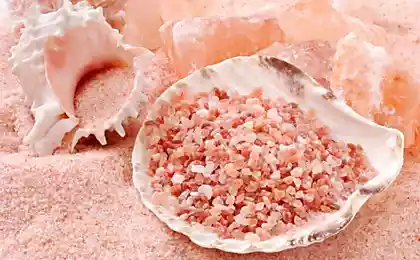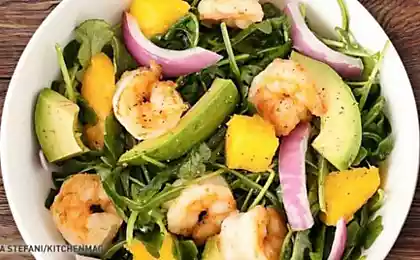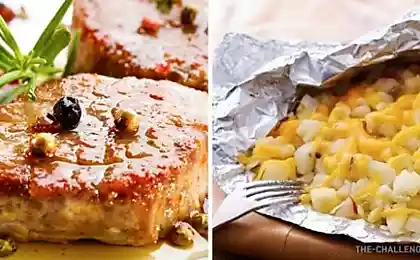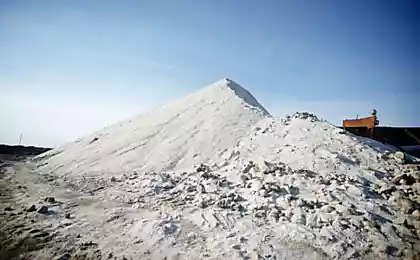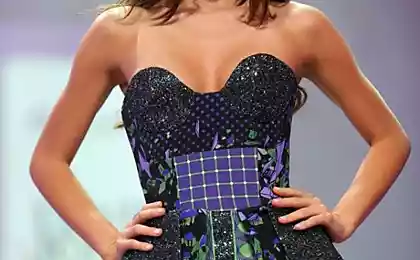419
Butterflies grow in road salt
Increased content of sodium in plants that makes male butterflies brawnier, females and increases the brain and eyes.
Road salt, which is sprinkled on snowy winter roads and sidewalks, with the onset of spring does not disappear: gradually dissolved, she goes with the water into the soil and begins a journey through the ecosystem. Considering how the amount of salt wasted utilities each year, there may be a legitimate question as it affects the flora and fauna.

The University of Minnesota have tried to estimate the salt content in plants growing along city roads, and it turned out that after the snowy winters of 2011 and 2013, the level of sodium in plant tissues increased from 1.5 to 30 times – obviously due to the active use of deicing salt reagents. But only some plants, the researchers did not stop. They set up an experiment in which caterpillars of the monarch butterflies and butterflies of Repnin kept on salted diet; later these caterpillars were compared with their comrades who were fed the same plants, but without the high content of salt.Obviously, the first to feel the effect of salt on yourself, there will be roadside plants and insects that feed on them. Environmentalists from the Caterpillars that grew "on the salt" were larger than those grown on conventional feed. The number surviving (that is, the number of those who have grown to metamorphosis), the two groups differed from each other, but not by much: among the "salt" of the caterpillars survived 40-50% among "salt-free" – 58%. However, the differences became much more noticeable when the caterpillars turned into butterflies, and these differences were not in favor of "salt-free" individuals. The males of butterflies that when he was the caterpillars eat salty plants, build more muscle, and females grew eyes and brain. Obviously, such changes are the butterflies a lot more muscular males can fly longer and farther in search of potential partners for reproduction, and wide-eyed and brainy females will be better to choose plants suitable for egg laying. Sodium salts are necessary for the development of muscles and brain, so it is understandable why salt excess did of the butterfly accelerates. However, as soon as the researchers further raise the salt level in the plant feed, as the picture changed dramatically: the caterpillars survived not already 40-50%, and only 10% of that is salt they simply poisoned. Of course, I would like to think that the amount of salt that gets dumped on the road, brings the butterflies. However, something tells us that posolennoy roadside plants in fact can easily exceed the threat threshold, and butterflies, instead of becoming stronger and smarter, will simply die out. The researchers themselves note in their article in the Proceedings of the National Academy of Sciences, they focused on those plants that grow along the ordinary roads, and that for completeness we need to check also those that grow along the highways and freeways. On such roads because of their special importance, salt spent a lot more, and that's where the plants may well be poisonous to caterpillars.
Source: nkj.ru
Road salt, which is sprinkled on snowy winter roads and sidewalks, with the onset of spring does not disappear: gradually dissolved, she goes with the water into the soil and begins a journey through the ecosystem. Considering how the amount of salt wasted utilities each year, there may be a legitimate question as it affects the flora and fauna.

The University of Minnesota have tried to estimate the salt content in plants growing along city roads, and it turned out that after the snowy winters of 2011 and 2013, the level of sodium in plant tissues increased from 1.5 to 30 times – obviously due to the active use of deicing salt reagents. But only some plants, the researchers did not stop. They set up an experiment in which caterpillars of the monarch butterflies and butterflies of Repnin kept on salted diet; later these caterpillars were compared with their comrades who were fed the same plants, but without the high content of salt.Obviously, the first to feel the effect of salt on yourself, there will be roadside plants and insects that feed on them. Environmentalists from the Caterpillars that grew "on the salt" were larger than those grown on conventional feed. The number surviving (that is, the number of those who have grown to metamorphosis), the two groups differed from each other, but not by much: among the "salt" of the caterpillars survived 40-50% among "salt-free" – 58%. However, the differences became much more noticeable when the caterpillars turned into butterflies, and these differences were not in favor of "salt-free" individuals. The males of butterflies that when he was the caterpillars eat salty plants, build more muscle, and females grew eyes and brain. Obviously, such changes are the butterflies a lot more muscular males can fly longer and farther in search of potential partners for reproduction, and wide-eyed and brainy females will be better to choose plants suitable for egg laying. Sodium salts are necessary for the development of muscles and brain, so it is understandable why salt excess did of the butterfly accelerates. However, as soon as the researchers further raise the salt level in the plant feed, as the picture changed dramatically: the caterpillars survived not already 40-50%, and only 10% of that is salt they simply poisoned. Of course, I would like to think that the amount of salt that gets dumped on the road, brings the butterflies. However, something tells us that posolennoy roadside plants in fact can easily exceed the threat threshold, and butterflies, instead of becoming stronger and smarter, will simply die out. The researchers themselves note in their article in the Proceedings of the National Academy of Sciences, they focused on those plants that grow along the ordinary roads, and that for completeness we need to check also those that grow along the highways and freeways. On such roads because of their special importance, salt spent a lot more, and that's where the plants may well be poisonous to caterpillars.
Source: nkj.ru







